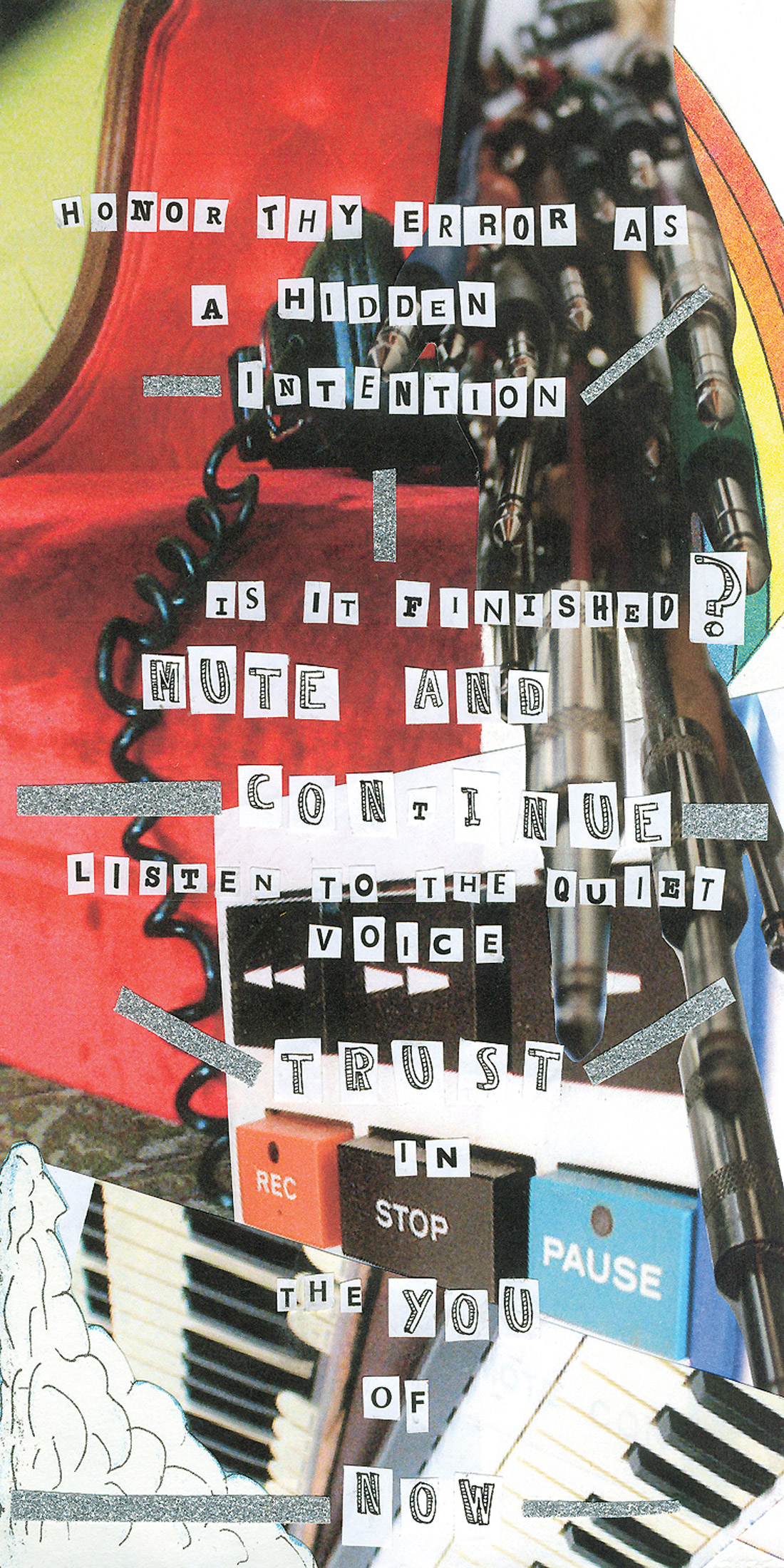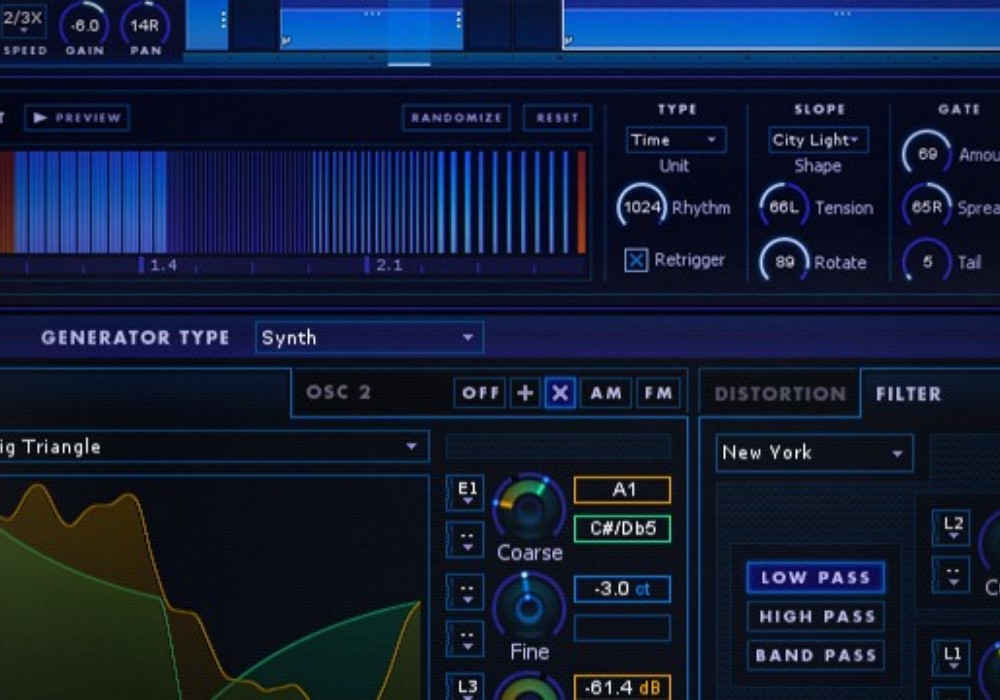Sound Skulptor is a division of the Synchronia Company, which also runs a studio in southwest France. They offer a line of DIY audio kits. We jumped at the chance to review the Stereo Tape Simulator (STS). Encased in a desktop box, the STS includes the electronics of a classical tape recorder along with many features such as variable gain input stage, pre-emphasis stage, recording amplifier, constant-current driven tape head, playback amplifier with 6 dB per octave attenuation, NAB de-emphasis stage, filter emulating the effect of head gap, and differential output stage. Readers who want to know more about these physical reconstructions of tape deck technology can check out my review of the Rupert Neve Designs Portico 5042 ( Tape Op #51). Inside the case are actual coupled coils that simulate head and tape behavior. By modifying the bandwidth and saturation of the magnetic core of each coil, the STS can simulate an analog tape recorder operating at 7.5, 15, and 30 ips.
Regarding the build, the parts were clearly labeled, and the instructions were well documented and illustrated. Although they are a French company, the instructions are clearly translated. (I totally felt like the ugly American who doesn’t speak other languages.) The parts include a lead bender that was much more useful than the commonly seen Digikey and Mouser ones, and we continue to use it to this day. There are many components to this kit, and it is a trial of patience and attention to detail. Obviously, that means Dylan Ray (one of our engineers) assembled it. Everything worked on the first try; the only tough part was calibrating the LED meters, but careful calibration is always needed for such meters.
I was not satisfied with the desktop enclosure because I wanted to try it in my mastering rig. Fortunately, Sound Skulptor sent me the data files for an aluminum 19” rack panel made by Front Panel Express (www.frontpanelexpress.com). I ordered it. With shipping, it was around $90. (If you don’t need to rack mount your STS, you won’t need to buy this extra faceplate.) The stock unit comes with a black faceplate, but the design of the 19” panel was silver. I didn’t change it, and in person, the silver looks pretty sharp. Power is provided by a “line lump” power supply/cable.
I tried the STS on a variety of mixes across many genres. Although I did not always choose it for the final masters, I was always able to find a usable setting. In general, at 30 ips, the effect is subtle. Spikey transients are rounded and tamed in gentle manner. There is some high-end reduction, but it is very slight. There were times when harsh cymbals were better controlled by the STS than by a multi-band compressor or de-esser. Moving to 15 ips gives a more pronounced boost in the low end. Thin mixes or all-ITB mixes can be thickened this way without undue low-mid mud. The 7.5 ips setting provides even more bass and more high-end roll-off. I didn’t find any times when I felt comfortable using it across a two-track mix, but I could imagine it being used on individual tracks without a problem. I could see this getting a lot of use during tracking and mixdown. Since the unit is dual mono, you could simultaneously process bass guitar at 15 ips and snare at 30 ips. You have a lot of flexibility.
So, how does it sound? In a few words, really good. One of my clients, Preslav Lefterov, who owns a Pittsburgh studio called Machine Age, loved the STS at 15 ips on the last two projects he brought in for mastering. That’s a strong endorsement coming from the owner of a studio that specializes in tape machines and vintage gear. I mean, this guy has an ATR-102, an Ampex MM1200, and more! Compared to other tape saturators, I like to bring in the preference argument. For example, the Neve 1710 tape saturation circuit in my Legendary Audio Masterpiece (Tape Op #67) has a more aggressive, almost “you are now mixing through an API console” sound. Conversely, the emulation process in the Crane Song HEDD 192 (#26) is much more subtle than either. So, like comparing an Otari to a Studer to an Ampex, they all sound different.
The only concerns I have about the unit deal with the input and output potentiometers. This is more a usage note than a complaint. The pots are fully variable, although there is a center detent. Like a real tape machine, the unit saturates differently depending on how much input gain you provide. So, trust your ears and the LED meters to see how far into the orange and red you choose to venture before committing your processing. The gain responses are different depending on which ips setting you choose; consequently, it can be difficult to make fast comparisons between settings. If you plan to use the unit in stereo, be advised that the left and right controls track independently, and you will need to check your levels in order to ensure equal left and right gain. (The simplest way to do this is feed a 1 kHz tone through the unit. Flip the polarity of one channel, and listen to the results in mono. Adjust until you hear the most cancellation.)
If you are handy with a soldering iron, or if you can convince/pay/coerce someone who is into building one of these for you, I sincerely recommend the STS. It does a very good job imparting a vintage vibe to individual tracks and two-track mixes. It sounds distinct from other market offerings, and if you take your time, you might learn a little bit more about electronics in the process. Of course, if you are lacking construction skills or a minion, Sound Skulptor will ship you a completed and tested kit for an additional fee. I’m keeping my STS in my mastering rig. If the tracking guys in my studio want it, they’ll need to build another one. (€375 EUR for full kit, €752 EUR assembled; www.soundskulptor.com)
–Garrett Haines, www.treelady.com
Placid Audio
Placid Audio’s first product was the original Copperphone (Tape Op #42), a unique mic in both appearance and sound. Recently introduced, the Copperphone Harmonica Mini was originally designed for (you guessed it) harmonica players. And while it does have the limited-bandwidth sound of the original Copperphone, the Harmonica Mini uses a more modern transducer and lacks the resonant chamber found in its larger sibling. The body of the mic is an eye-catching 1.75’’ x 2.25’’ pill-like capsule. Instead of the U-shaped yoke found on the Copperphone, the Harmonica Mini is surrounded by an aluminum halo and suspended by eight springs (think The King’s Speech — you know, that movie your girlfriend made you see because Colin Firth is so “dreamy”). As a dynamic mic, it does not require phantom power, and it interfaces using a standard XLR connector.
Oddly enough, I had mixed results with the Harmonica Mini on... harmonica. First, my test player wanted to use the mic out of the mount. Fine. So I disconnected the springs. And there was a lot of metal on metal sliding and noise at first. (He was used to a bullet-style mic that has small metal guides that hold the harmonica from shifting up and down.) But some gaffer tape on the edges provided enough resistance to reduce the slippage. Sonic results varied. On a small Hohner Blues Harp (in C), the Harmonica Mini was almost too bright, and from a recording engineer’s viewpoint, I would have preferred a ribbon mic at a distance. However, using a larger Koch Chromatic was a different experience. The lower registers were simply fantastic through the Harmonica Mini. In some ways, I liked the playback better than what I heard in the room. Like any mic choice, I think a lot would come down to the performer and how the instrument was going to be used in the song. But most people considering this mic are not going to treat it as a one-instrument device anyway.
I’m sure there are skeptics who scoff at the idea of a mic that purposefully sounds, well, limited — specifically when the manufacturer states a frequency response of 200 Hz to 1.4 kHz. These naysayers refuse to pay for a mic when they can slap an EQ plug-in on a track and mangle it to similar effect. Note, I say “similar”, because a plug-in is simply not the same. I suppose the argument is no different than using an amplifier simulator plug-in instead of mic’ing up a real tube amp. If those results sound good enough for you, then go for it. But to my ears, virtual amps don’t sound as good as the real thing (yet). Likewise, vocals recorded with the Copperphone Harmonica Mini sit in a mix unlike any EQ-filtered equivalent. Perhaps it’s the harmonics or the way the diaphragm can or can’t deal with transients, but there is an undeniable dimension and presence with this mic. For example, working with Isaac Sharp on a song called “Mr. Scientist”, Isaac wanted a nasal or telephone sound. We have a Bing Carbon Telephone mic (Tape Op #66), but this section needed more sparkle, more top, more aggression. Using the Harmonica Mini was exactly what the track needed.
We also tried, or wanted to try, the mic in the following situations. On background vocals, put a group in a semi-circle and surround with diffusors, or for a more wild sound, stick everyone in the shower or in a tiled bathroom. We also keep a bunch of smaller amps for guitar solos and effects. The Harmonica Mini in front of a little Danelectro or Kalamazoo can help get you a track that almost mixes itself come solo time. It was also cool as a drum room mic, but even more fun as a snare bottom mic. (Remember, this is a dynamic; it can take the SPL.) Finally, one thing we tried was recording the chorus of a song as it played back through our nearfield monitors, then used that played back as a weird intro for the song. No plug-in will give you that kind of effect. These are just some starting points. Tape Op has some of the most creative readers on the planet. I’m sure the Placid Audio website will have even more stories in times to come.
Ultimately, choosing the original Copperphone or the Copperphone Harmonica Mini will come to personal preference. But either mic will give you a unique sound, impress clients, and might even inspire your creativity. ($299 direct; www.placidaudio.com)
–Garrett Haines, www.treelady.com
EQs, Signal Processors | No. 63
Pullet mini passive EQ
by John Baccigaluppi
This is one of the best sounding EQs I've ever used. I'm a big fan of passive EQs for their smooth sound, especially when boosting. The Pultec is one of the best-known examples of a passive EQ. In...





_disp_horizontal_bw.jpg)